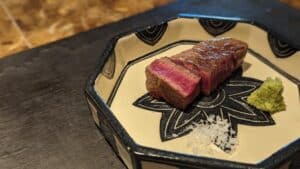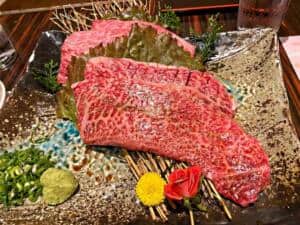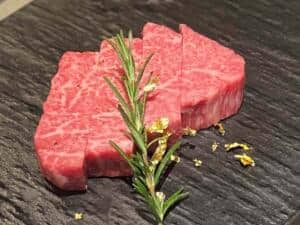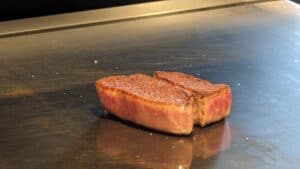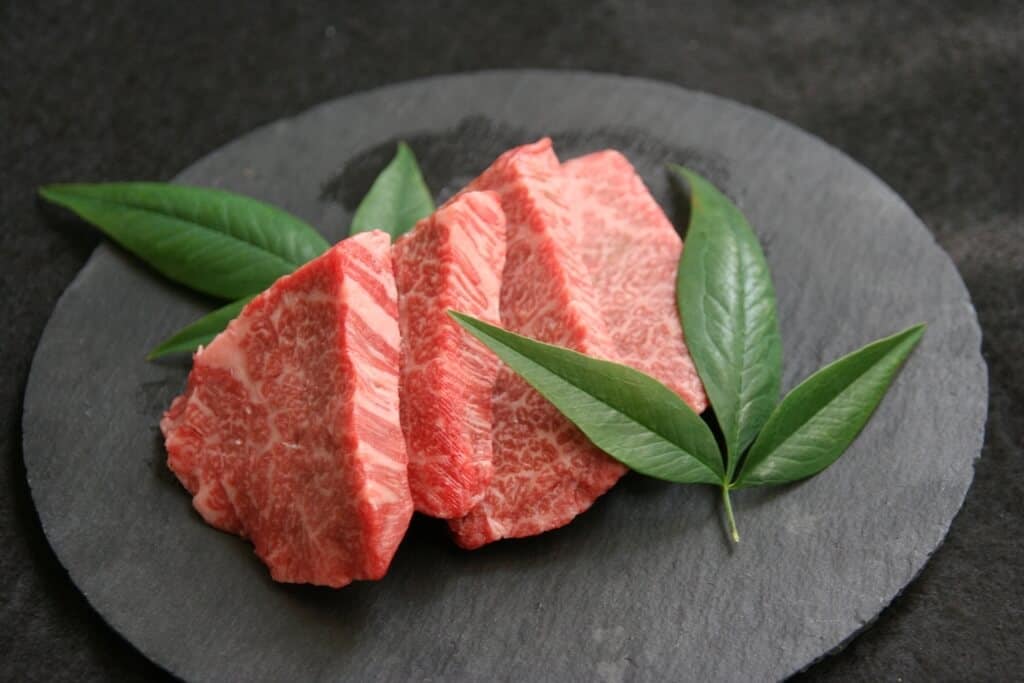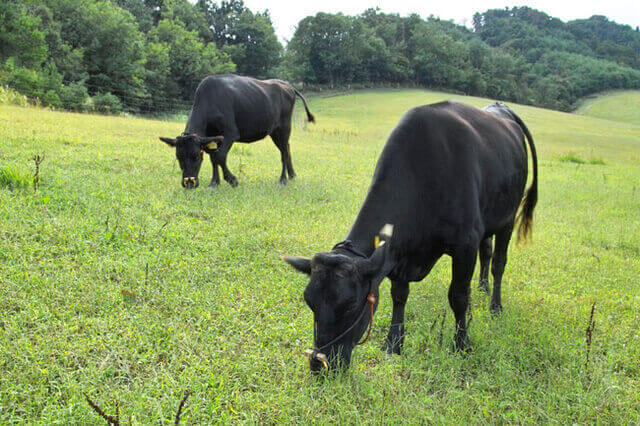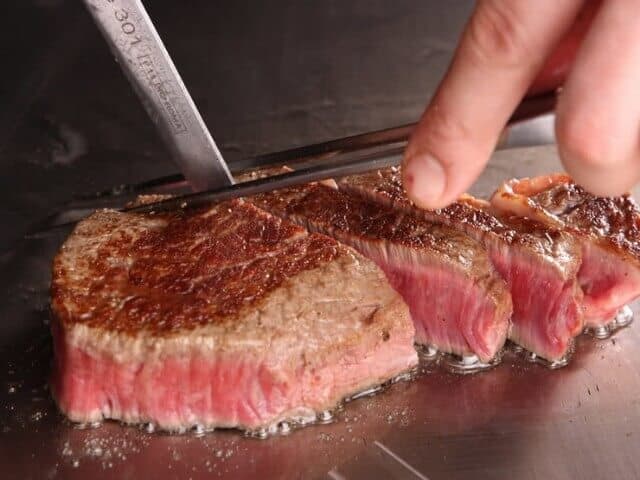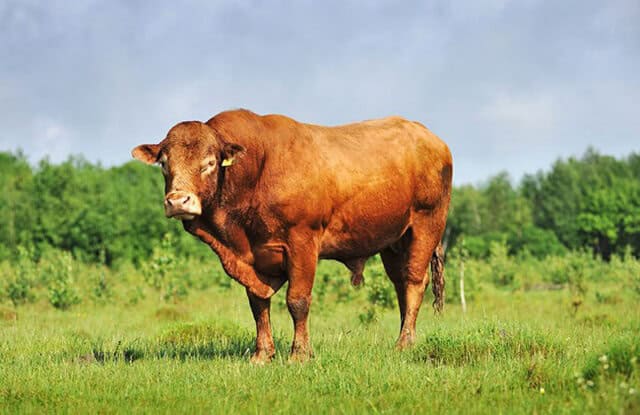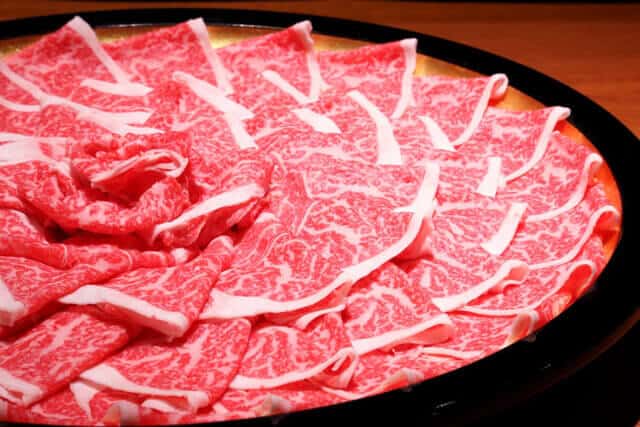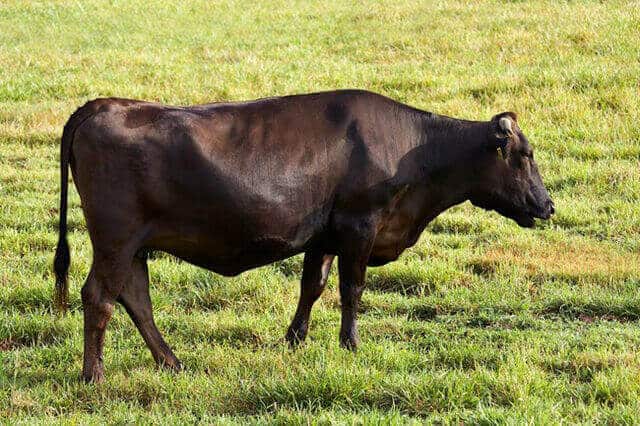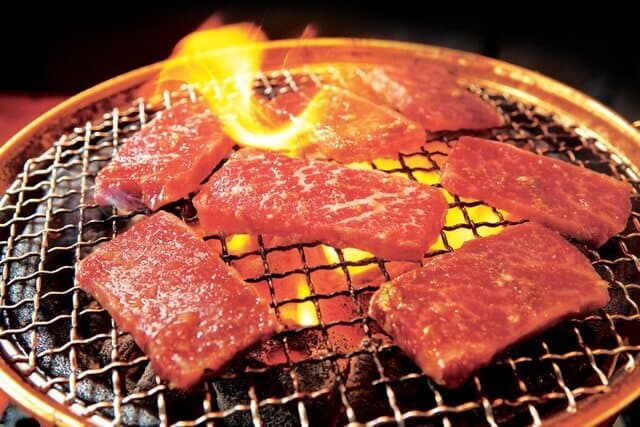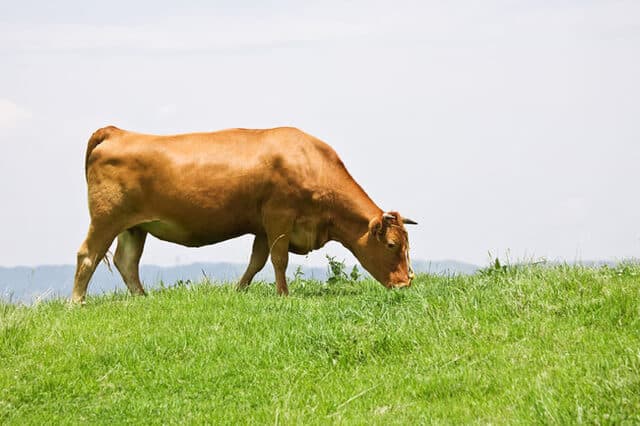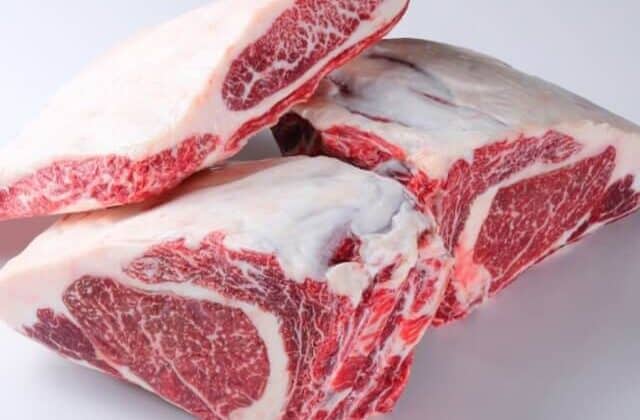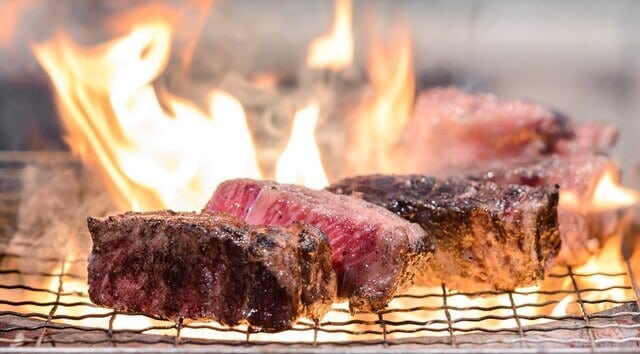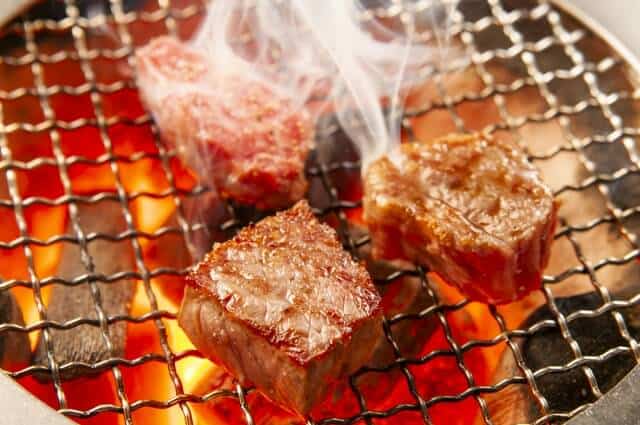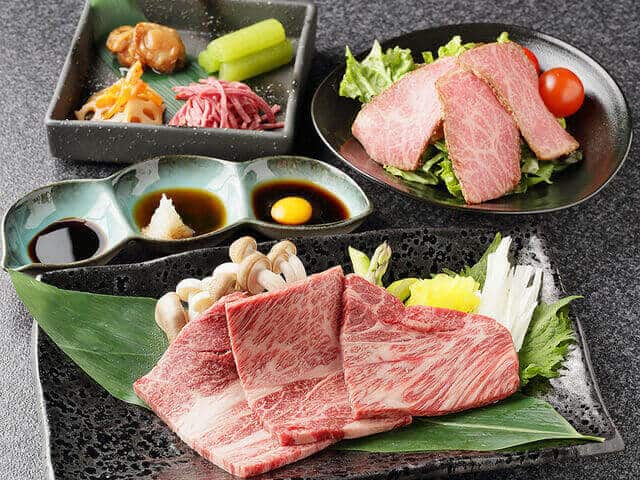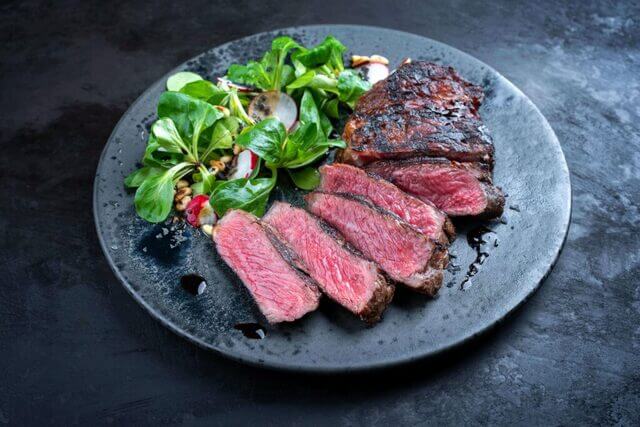Wagyu beef, renowned for its exceptional marbling and tenderness, holds a special place in Japanese cuisine and culture. In Japan, Wagyu ranking is graded using a system that evaluates the quality of its marbling and overall characteristics. The importance of these rankings lies in guaranteeing a premium dining experience, where each grade represents the dedication to raising and producing beef of the highest quality.
What is Wagyu?
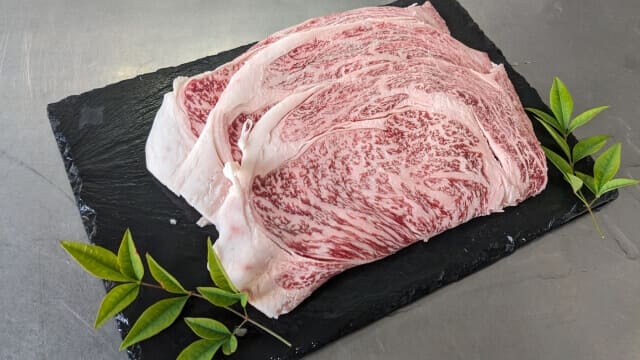
Wagyu is a breed of cattle originating from Japan, known for its exceptional quality of beef. The term “Wagyu” translates to “Japanese cow” (Wa meaning Japanese and gyu meaning cow). All cattle fattened in Japan for more than 3 months, or cattle fattened in Japan for the longest period, are all domestically produced cattle. Locals bred these cattle for their unique genetic predisposition to intense marbling of fat within the muscle. This contributes to the meat’s tenderness, juiciness, and rich flavor. Wagyu beef is highly prized and often regarded as one of the finest and most luxurious types of beef in the world. The rearing of Wagyu cattle involves specific diet and environment, to achieve the desired marbling and quality.
Different regions in Japan have their varieties of Wagyu, such as Kobe beef and Matsusaka beef, each with distinct characteristics and levels of marbling. The demand for Wagyu beef has expanded globally, with breeding programs established in other countries to produce Wagyu-style beef with similar attributes.
A Brief History of Wagyu
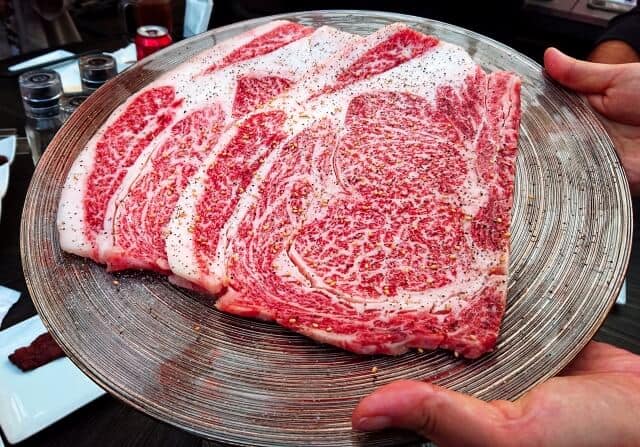
The history of Wagyu cattle dates back as far as 35,000 years ago, showing evidence of genetic separation into the Wagyu genetic strain. The modern Wagyu breed we know today is the result of the intentional crossing of native Japanese cattle with imported breeds. This crossbreeding initiative began in 1868 following the Meiji Restoration, during which the Japanese government aimed to introduce Western food habits and culture. To achieve this, breeds like Brown Swiss, Devon, Shorthorn, Simmental, Ayrshire, and Korean cattle were imported into Japan. The infusion of these British, European, and Asian breeds continued until 1910 when outside genetic influences were restricted.
The diversity of these Wagyu has led to the development of three major black Wagyu strains: Tajiri or Tajima, Fujiyoshi (Shimane), and Kedaka (Tottori). These strains evolved due to regional geographic isolation in Japan, each contributing unique characteristics to the Wagyu breed. Today, the Japanese national herd consists predominantly of black Wagyu cattle, with approximately 90% belonging to these black strains. The remaining 10% comprises the red strains Kochi and Kumamoto, showcasing the rich diversity and heritage of Wagyu cattle in Japan.
Types of Wagyu beef
The four types of Wagyu that locals give the title of Wagyu are “Kuroge Wagyu”, “Brown Wagyu”, “Non-horn Wagyu”, and “Japanese Shorthorn”, each with their own characteristics.
Japanese Black beef
Kuroge Wagyu beef, which accounts for 90% of Wagyu beef, is famous for branded beef such as “Kobe Beef” and “Miyazaki Beef”. It is also the smallest of the Wagyu beef types and characterized by its fatty, marbled meat.
Brown-haired Wagyu beef
Brown-haired Wagyu beef is represented by Higo beef and Tosa Wagyu beef. Because of its reddish color, it is sometimes called “Akage-gyu”. This variety is especially popular among health-conscious people because of its lean meat.
Kakuwagyu beef
Locals fattened Mukuwa Wagyu beef in places such as Hagi City, and Yamaguchi Prefecture. This is an extremely rare breed, with only 3 to 4 shipped each month. It has a lot of lean meat, making it a popular variety among health-conscious people.
Japanese Shorthorn
In addition to Hokkaido, they are fattened in cold regions such as Aomori, Akita, and Iwate. They are raised on pasture because it requires less labor, and are the largest of the Wagyu cattle. It also has a characteristic that the meat quality is slightly inferior and there is a lot of lean meat.
The Wagyu Ranking System
Wagyu ranking refers to the grading system used to assess the quality of Wagyu beef based on specific criteria such as marbling, meat color, texture, and fat quality. Understanding Wagyu ranking allows consumers to make informed decisions when selecting beef for different culinary preparations.
What is yield grade?
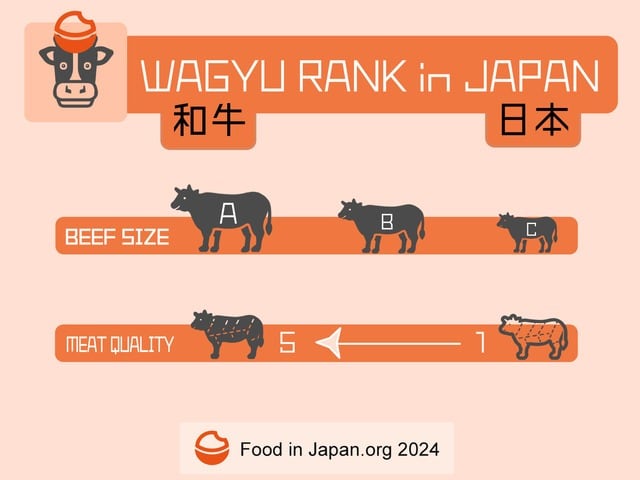
Yield grade is a classification that predicts how much meat can be obtained from one cow. Yield grade is also determined by measuring the loin area, rib thickness, and subcutaneous fat thickness on the left side of the carcass, cut between the 6th and 7th ribs. The higher these numbers, the more meat you can get from a whole cow.
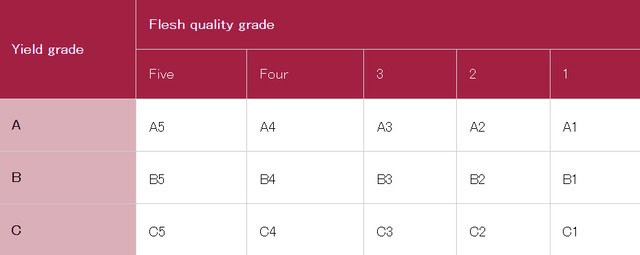
According to Japan Meat Grading Association, they divided the Yield grades into three levels: A, B, and C. With A being the best and C being the worst. Judgment is made based on the numerical value determined by the yield standard value formula. 72 or more is A, 69 or more but less than 72 is B, and less than 69 is C. The grading results are a combination of the yield grades “A, B, C” and the meat quality grades “5, 4, 3, 2, 1” and are divided into 15 ranks.
The highest wagyu ranking is A5, meaning that you can obtain a large amount of meat from one cow. Thus, the meat is well-marbled, firm, and has a nice color and luster. The lowest wagyu ranking is C1, meaning that the amount of meat from one cow is small, there is little marbling, and the firmness and color and luster are not very good. However, you can bring out the flavor of beef by cooking it in stews or making hamburgers.
What is meat quality grade?
Meat quality is graded by evaluating four items: “marbling,” “meat color and luster,” and “fat color and quality”. There are five grades, from 5 to 1, with 5 being the best grade. Grades are determined by the lowest grade of the four items. For example, even if the color, firmness, and texture of the meat are 4 in marbling, but the color and quality of the fat are 3, it is grade 3.
Marbling
“Marbling” refers to the degree of marbling. It is evaluated on a 12-point scale and divided into 5 grades according to the “Marbling Standard Beef Marbling Standard (BMS)”. With 5 having No.8 to No.12 BMS on wagyu ranking and 1 being rare.
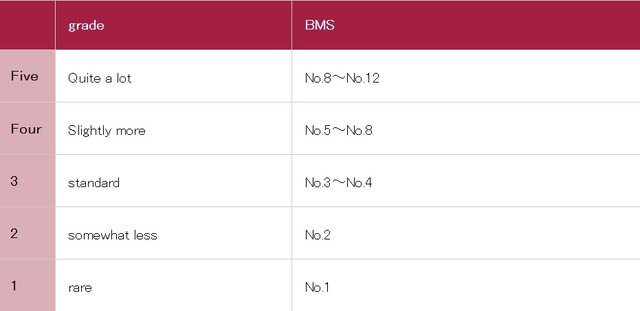
Color of meat
Meat color and gloss are evaluated on a seven-point scale from No. 1 to No. 7 based on the Beef Color Standard (BCS). Gloss is visually evaluated and graded based on the flesh color judgment value. 5 being the highest and 1 as the inferior one.
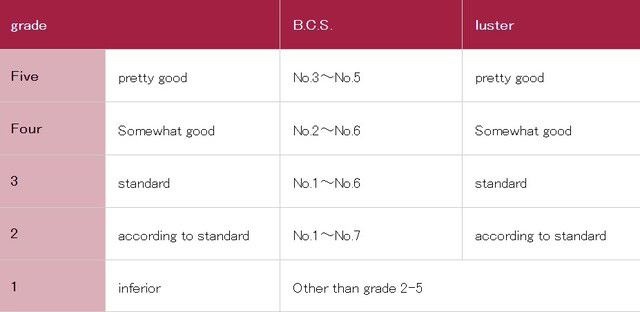
Color and quality of fat
Another criteria for meat quality grade is the color and quality of the fat. Fat color is determined using the 7-level Beef Fat Standard (BFS), and gloss and quality are visually evaluated.
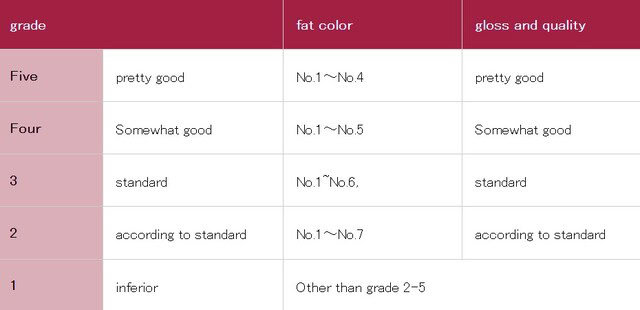
Newest Brand of Wagyu beef introduced this April
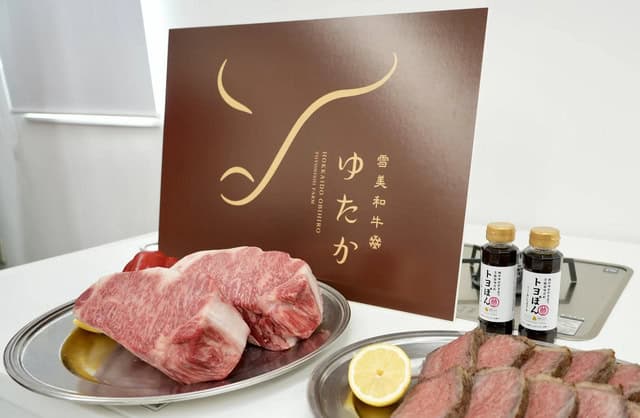
Toyonishi Farm, an agricultural company based in Obihiro City, Hokkaido, known for its Toyonishi Beef, will begin selling a new brand of Wagyu beef called Yukimi Wagyu Yutaka starting in April. This beef is celebrated for its beautiful marbling, which adds a luxurious touch to your dining experience. The standout feature of this Wagyu beef is its delicious marbling, rated at a Beef Marbling Standard (BMS) of 6 or higher, signifying top-quality beef. The name “Yukimi” refers to the stunning marbling resembling the powder snow that falls in Tokachi.
Recommended ways to eat high-rank beef
Grilled meat
For yakiniku, thinly sliced ribs or shoulder loins, which have a lot of marbling, are suitable. The thighs are a part of the body that undergoes a lot of exercise, so they are a little firmer but have less fat. Recommended for those who want to reduce fat content.
Grilled shabu-shabu
Yaki Shabu Shabu” is a dish of thinly sliced beef that is lightly roasted and served with salt and ponzu sauce. “Shoulder loin” is easy to marble and you can enjoy the marbling.
Steak
Recommended steaks include tender and fine-grained sirloin, well-marbled loin, rump, and fillet. In particular, the fillet is a rare part that only accounts for 3% of the meat from a single cow.
Takeaway
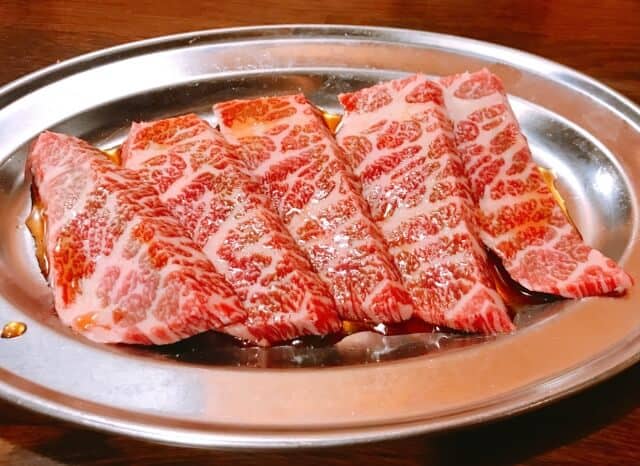
When discussing wagyu ranking, we are referring to the perceived quality of beef based on its appearance rather than taste. The evaluation criteria focus on the marbling or distribution of fat within the meat. Higher-ranking beef, such as A5 and A4, exhibits more marbling compared to lower-ranked beef. It’s important to note that the rank of beef does not directly indicate whether it will taste delicious or not, as taste preferences can vary greatly among individuals.
Therefore, for those who prefer beef with abundant marbling, it’s advisable to choose higher-grade beef varieties. These cuts are well-suited for simple cooking methods such as yakiniku (Japanese barbecue), grilled shabu-shabu (thinly sliced meat briefly cooked in broth), and steak. Enjoying high-grade beef at home allows you to appreciate its unique flavor and tenderness.
